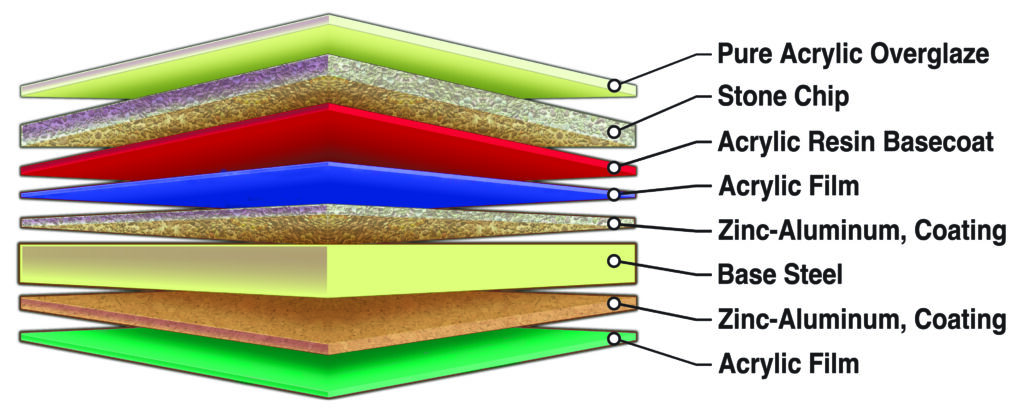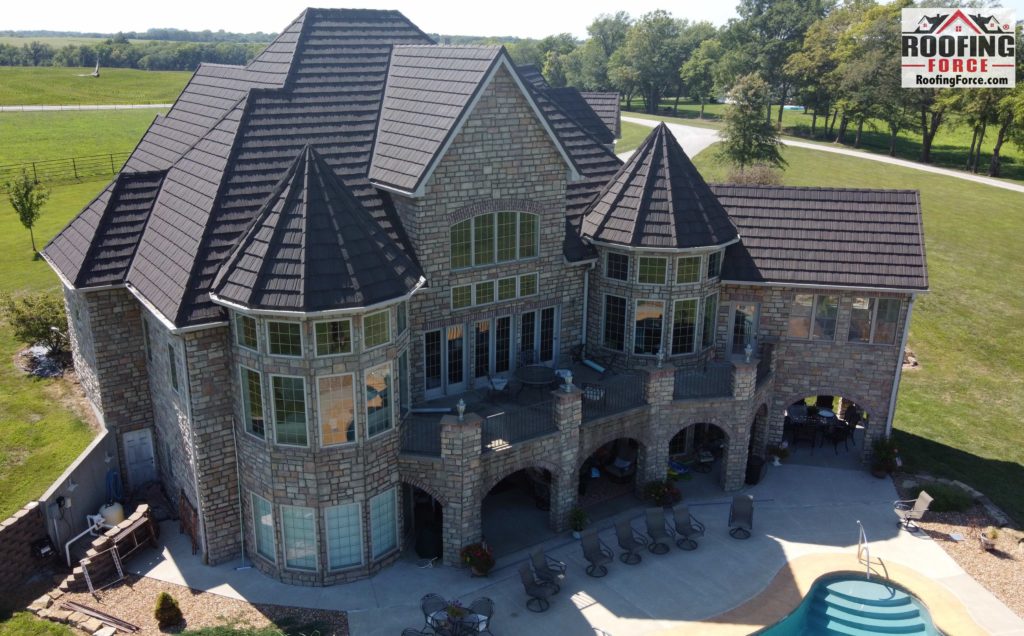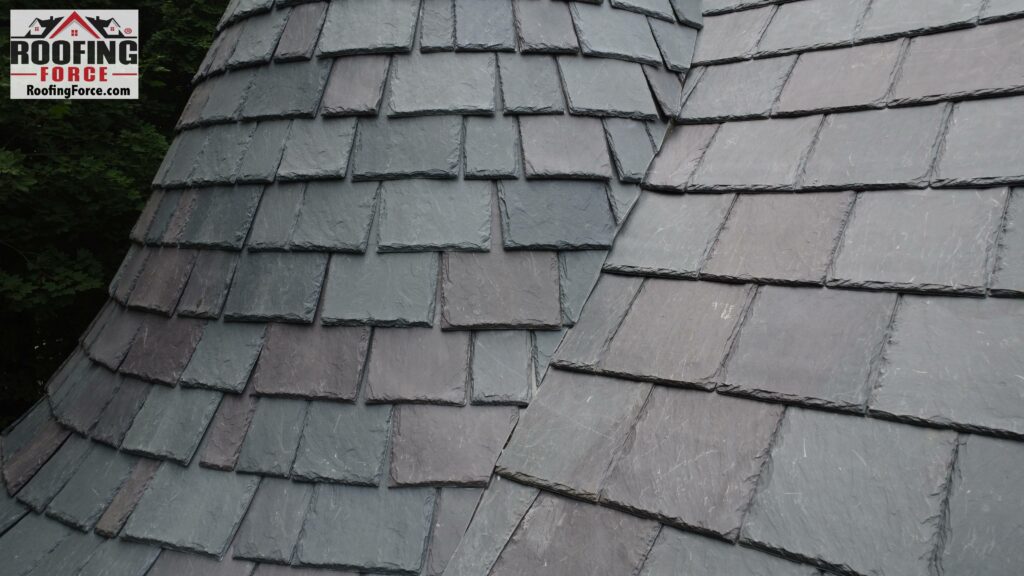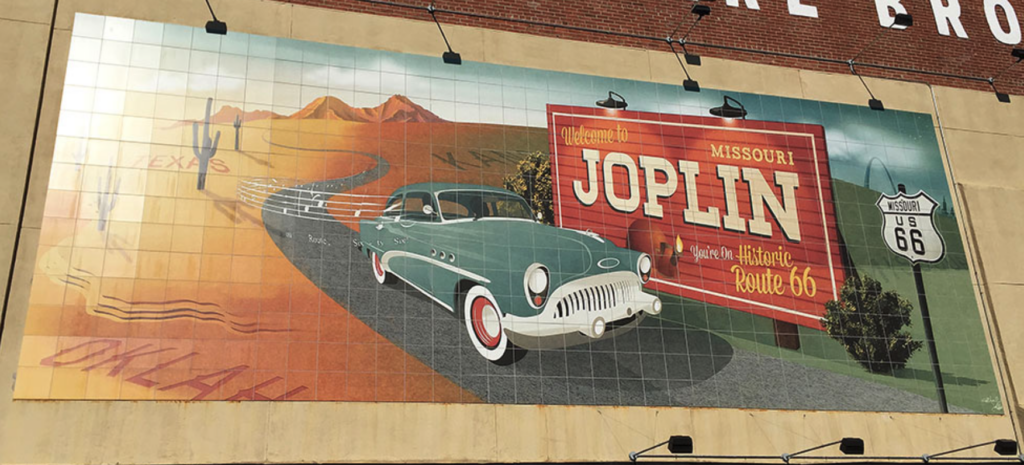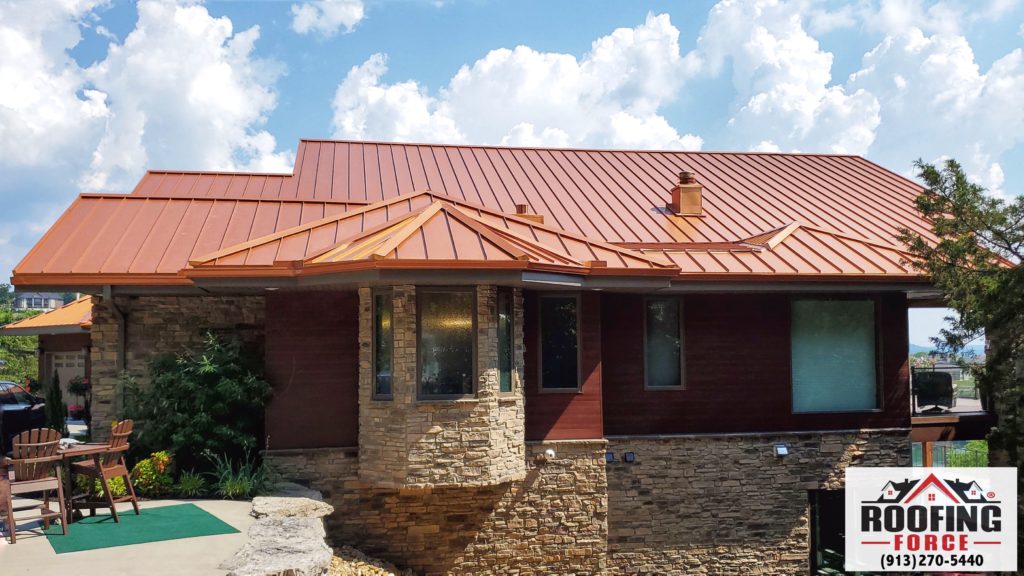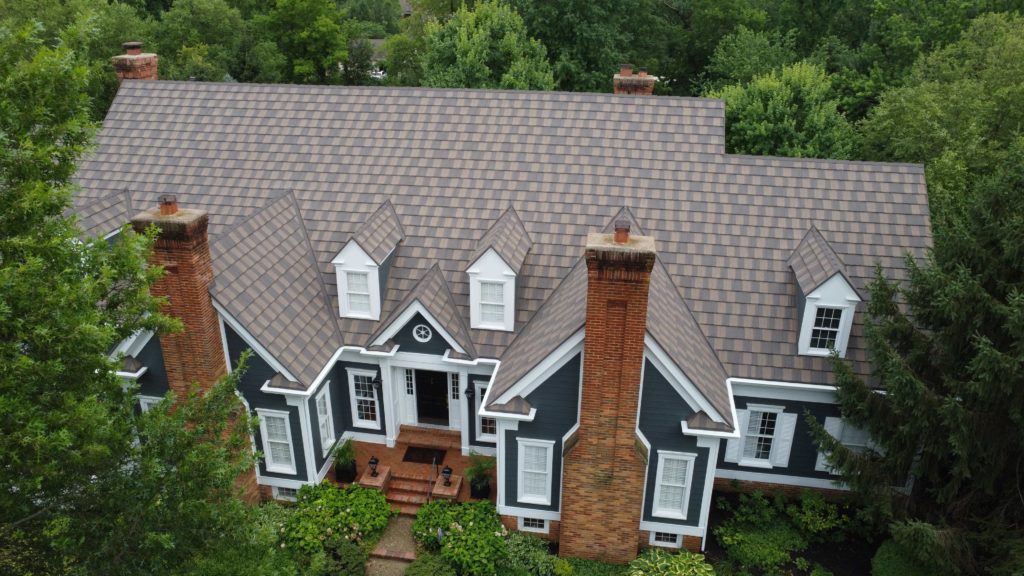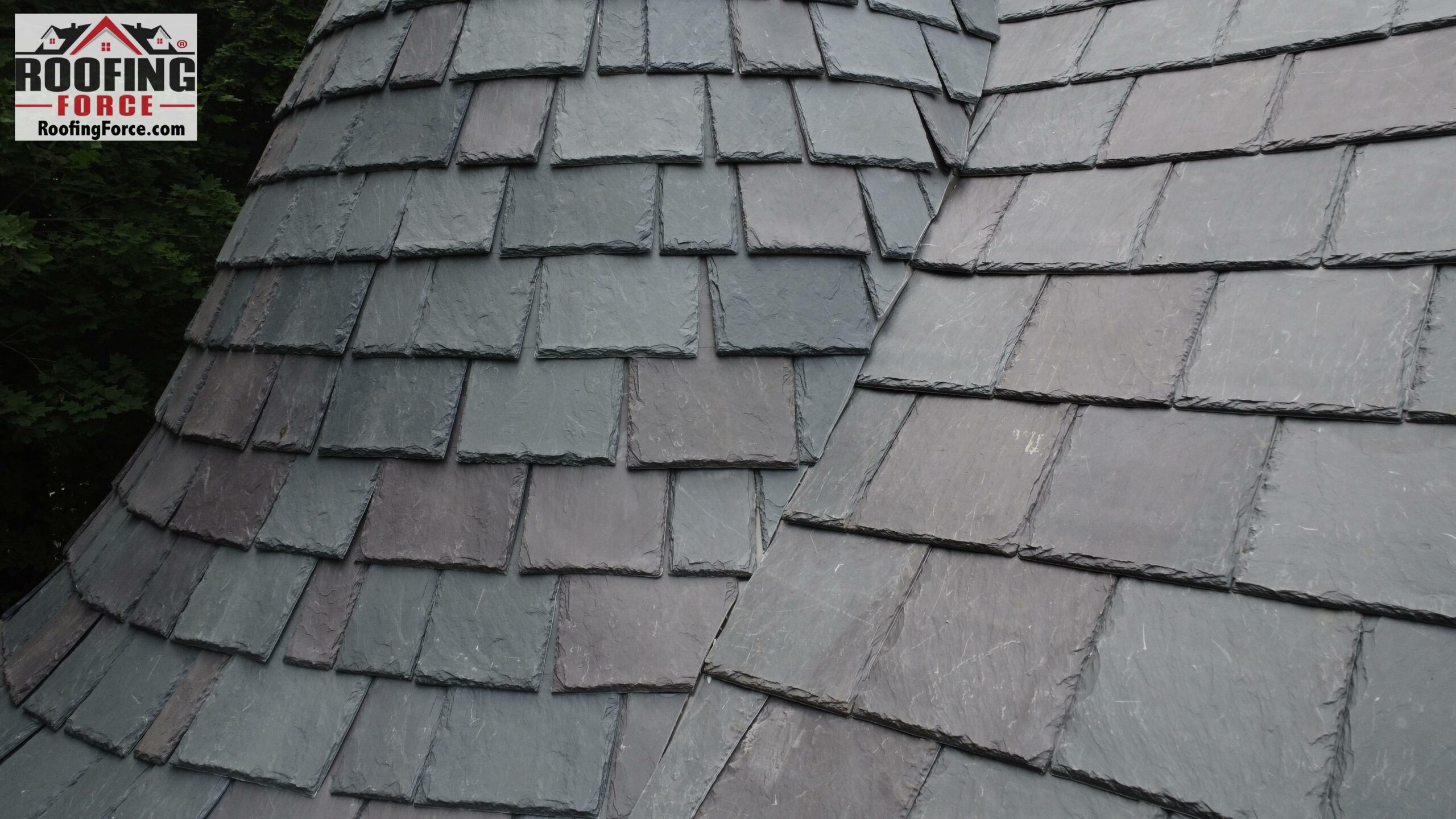
What are Composite Polymer Roofing Products?
Polymer or composite roofing materials are synthetic products that are manufactured from various plastics and resins to look nearly identical to stone slate, wood shake, wood shingle, or clay tile products. Synthetic products are generally cast from molds or 3D images of real natural materials. These imitation products are available in a large variety of profiles, colors and designs. If you love the look of natural slate, cedar shakes, or clay tile but hate the high price, then polymer roofing products are something you should consider.
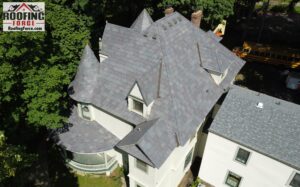
DaVinci, Multi-Width Slate, European
It should be noted that terms “composite shingle” or “composition shingles” are sometimes applied to asphalt shingles because they contain some type of recycled or plastic materials. However, these “asphalt composite/composition shingles” should not be confused with true synthetic roofing materials that are created to appear almost exactly like their natural counterparts.
The timeless look of natural slate, wooden shake, and clay tile products is desired for many high-end, Traditional, Colonial, Victorian, French Provincial, Craftsman, Cape Cod, Mediterranean, Farmhouse, Rustic and Classical homes as well as commercial, church and historical buildings. Unfortunately, the use of natural roofing materials can be environmentally damaging, difficult and costly to fabricate, expensive and challenging to install, and expensive to transport. Thus, various manufacturers have created simulated synthetic products as a state-of-the-art solution to problems related to the acquisition, fabrication, and installation of natural roofing materials. These manufacturers and their primary product profiles include:
DaVinci Roofscapes (Shake: Multi-Width, Single-Width, and Select Shake. Slate: Multi-Width, Single-Width, Province, and Inspire)
Enviroshake (Shake: Enviroshake, Enviroshingle and Envirocool. Slate: Enviroslate)
CeDUR (Shake: Cedar Shake)
Brava (Shake: Cedar Shake. Slate: Slate Tile. Clay Tile: Spanish Barrel Tile)
EcoStar (Shake: Seneca Shake, Empire Shake, Majestic Niagara Shake, Empire Niagara Shake. Slate: Majestic Slate, Empire Slate, Empire Niagara Slate, Majestic Niagara Slate)

CeDUR, Live Oak, Royal Brown
Benefits of polymer roofing materials:
There are many positive things to keep in mind when considering a synthetic polymer roofing system.
- Price – The high cost to acquire and install stone slate and wood shakes/shingles is one of the biggest drawbacks to using natural materials. Polymer roofing products are much less expensive to purchase and install. Both types of materials are significantly more expensive than asphalt shingles. However, the overall cost difference between asphalt and polymer may not be that great when longevity, replacement costs, insurance rates, maintenance, and energy savings are considered.
- Fantastic Curb Appeal – Synthetic materials mimic the look of almost any natural product including wood shake/shingles, stone slate, and clay tiles. Many of these faux products have been approved for use in historic preservation projects.
- Consistent Look – The color, texture and look of many polymer products will essentially remain the same for decades (some fading will occur). Some manufacturers have developed special sunscreens to protect against UV exposure. In contrast, all wood materials will eventually chip, crack, split, fade, curl, or rot. Stone slate will maintain its colors, but it is still vulnerable to chipping, cracking and splitting.
- Long Lifespan – Polymer wood shakes/shingles last much longer than cedar and other real wood shakes. Under ideal conditions, nothing compares to the longevity of natural slate roofs that have been known to last well over 100 years. Today, stone slate is sorted into 3 different grades and the lowest grade has an estimated lifetime of only 20-40 years. Also, natural slate can be damaged or destroyed by large hailstones. Thus, slate is not the best choice in areas where large hail is common. Polymer materials are very durable, and all the manufacturers listed above offer a Lifetime Limited Material Warranty.
- Hail Damage Resistance – All composite manufacturers offer a Class 4 Hail Warranty. Wood shake/shingle, stone slate and clay tile products are much more susceptible to hail damage than synthetic products (clay tile is a poor choice in hail prone areas). Polymer roofing materials can withstand much larger and intense hail than stone slate, clay tile, wood shake or concrete roofing products. For more information, review (This Article) on why some Impact Resistant Class 4 materials are better than others.
- Wind Damage Resistance – 110-180 MPH Wind Certification depending on manufacturer.
- Fire Resistance – All of the polymer manufacturers listed above offer roofing systems with a Class “A” Fire Rating – the highest rating available (not all polymer products have this rating). In contrast, some insurance companies will not insure real wood shake roofs, and some municipalities and HOAs have banned the use of wood roofing materials. Wood must also be treated with topical chemicals on a periodic basis to maintain any kind of fire-resistance. These chemicals can be poisonous to ingest and harmful to the environment. While stone, clay and concrete products are very fire resistant, some profiles have experienced vulnerability to fire when embers have blown under the tiles (IIBHA & EurekAlert!)
- Lightweight and Easy to Handle – Weight is one of the biggest problems when dealing with stone slate, concrete slate/shake/tile, or clay tiles. Buildings must be specially designed or retrofitted to hold the weight of these products. Stone slate can also be broken if stepped upon. Polymer products are lightweight and do not require fortified and costly construction modifications. Weight is not a problem when working with wood shake materials. However, wood shake is more difficult, time consuming and expensive to install than polymer products.
- Energy Efficient – Some polymer roofing systems have Cool Roof and/or Energy Star ratings.
- Environmentally Friendly – Some composite materials are manufactured from recycled materials and can be recycled when they are removed. Other materials are produced from virgin resins but can still be recycled at the end of their lifespan.
- Lower Insurance Rates – Because of the longevity and resistance to wind, hail, mold, and fire, homeowners are sometimes able to earn discounts on yearly insurance premiums.
- Low-Maintenance – Polymer products can be walked on without damaging them (but can be very slippery) and are resistant to moss, lichen, insects and other pests. While the polymer roof itself needs little to no maintenance, vent seals and other parts of the roof will require periodic inspections and maintenance.
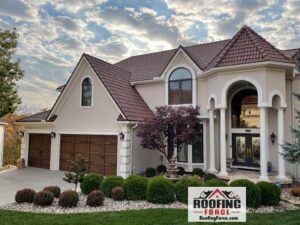
Brava, Spanish Barrel Tile, New Aged Terra Cotta
Cons of using polymer roofing products:
- Not an Exact Match – Synthetic products are aesthetically pleasing, and most people will not notice a difference between real and polymer materials when casually looking at a roof. However, upon close examination polymer products may not look exactly like natural materials. For example, some polymer products have a slight “plastic” sheen or glare as compared to their natural counterparts.
- Difficult to Install – Both natural and polymer roofing systems require specialized installation techniques, and it is important that you use a certified installer that is factory trained or highly experienced in the installation of these products.
- Beware of Fire Rating – Some synthetic products are only able to obtain a Class A Fire Rating when special underlayments are used. Others have a stand-alone Class A Fire Rating built-in to the composite material itself. Understand which you are buying.
- Unproven Technology – Polymer roofing products are relatively new to the market and the complete longevity of these products may not be known. 1996 was the first year that synthetic slate tiles were sold in the US. The manufactures and products listed in this article are well established and seem to be performing well. However, no synthetic products have been on the market as long as their warranties are guaranteed to last. Furthermore, several polymer products/companies have not survived because they did not withstand the elements or the test of time.
- Colors may Fade – It is not known for sure how well colors will hold up or fade over time, but thus far many products seem to be doing fine.
- Not Approved Everywhere – Because polymer products are so new, many homeowner associations have not approved these products for use on homes with the HOA boundaries. You’ll need to check your CC&Rs before installing these products.
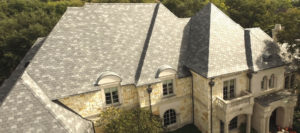
Inspire, Classic Slate, Custom Mix
Slate-Like, Shake-Like and Clay-Like Products Made from Other Materials
This article is primarily about the pros and cons of composite polymer materials. However, we would be doing a disservice to our readers if we did not touch on faux slate, wood, and tile roofing products that are manufactured from other materials. These products include Concrete Tiles, Metal, and Asphalt Shingles.
Concrete Tiles
Cement roofing materials have been fabricated to look like stone slate, wood shake and clay tile. Their primary benefits are that they come in many styles and colors and are less expensive than stone slate, polymer products and metal. Some of the products look almost exactly like real stone slate. However, concrete products do not solve the weight problem of stone slate and they create a weight problem when it comes to look-alike wood shake products. Before installing a concrete or slate roof, it is recommended that at an engineering report be done to verify that the roof as well as the ground/foundation will be able withstand the immense amount of weight being added to the structure. Concrete tiles are water shedding rather than waterproof. Thus, it is very important that you have a good underlayment. Concrete expands and contracts with temperature and can rub through and damage or destroy the underlayment. When this occurs, the concrete roof must be removed and the underlayment replaced. What use is having a concrete roof that will last 50-75 years if the underlayment needs to be replaced every 20 years? Some of these problems can be mitigated by installing a wood batten over the underlayment so the tiles do not come in contact with the roof. Cement products are very durable, long lasting, and are wind and fire resistant (some profiles with open ends are still vulnerable to fire). While some of these products have obtained an Impact Resistant Class 4 rating, they can still be destroyed by large hailstones (See Article). Like slate, concrete tile roofs require specialized and highly skilled installation crews.
Some of the manufactures of concrete materials include (there are too many product profiles to list here):
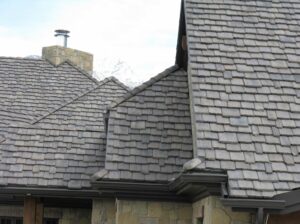
Metal
Some Stone Coated Steel and Stamped Steel products mimic the look of natural materials (Stamped Aluminum is also available but should be avoided in hail prone areas). Metal slate and metal shake products look like stone slate or wood shake from a distance. However, at close range it becomes obvious that these roofing materials are not made from slate or wood. Nonetheless, it is difficult to tell if metal tile products (such as Barrel-Vault, or Pacific Tile) are made from clay or not. Even though metal roofing products do not look as realistic as polymer of concrete options, they still have an excellent curb appeal. Many people that choose metal over natural or polymer products do it because they want the benefits of metal while maintaining a luxurious look. Specialized knowledge and highly trained installation crews are required to install these products. Metal expensive to install but is much less slate. Metal is also very durable, long lasting, energy efficient, wind, hail and fire resistant (Click Here) to learn more about Stone Coated Steel roofing. Metal roofing manufactures that offer profiles in a stone slate, wood shake, or clay tile look include:
Unified Steel (Shake: Pine-Crest Shake. Clay Tile: Pacific Tile, Barrel-Vault)
DECRA (Shake: Shake XD, Shake. Clay Tile: Villa Tile, Tile)
Tilcor (Shake: Craftsman Shake, CF Shake. Clay Tile: Antica)
Varitile (Shake: Shake, iShake. Clay Tile: Bond7, Classic, Riviera, Mistral, Romana, Gallo. Slate: iSlate)
Roser (Shake: Stonewood. Clay Tile: Cleo)
Future Roof (Slate: Slate. Shake: Shake. Clay Tile: Tile)
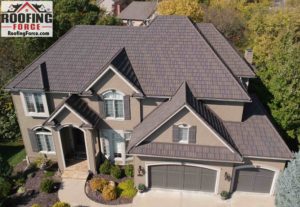
Unified Steel (Boral), Pacific Tile, Timberwood
Asphalt Shingles
There are several asphalt shingle profiles that are designed to look roughly like stone slate. These products have a slate-like appearance from a distance, but do not really look like the real thing when viewed up close. Nevertheless, many people want a high-end look without the expensive price tag. Asphalt shingles are the least expensive option when trying to achieve a stone slate look. They are also the least realistic and least durable option. Examples include:
CertainTeed (Grand Manor, Carriage House, Belmont IR, and Highland Slate)
GAF (Slateline, and Camelot II)
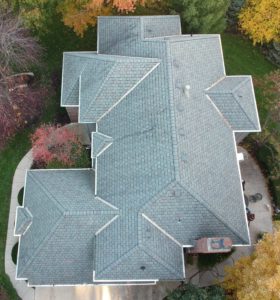
CertainTeed, Belmont, Colonial Slate
Although various asphalt manufactures have attempted to give wood-like names to certain profiles, no asphalt shingles come very close to the look of real wood shake or wood shingle materials.
Let one of the experts at Roofing Force give you a free estimate and help you choose the most optimal roof for your needs.
Roofing Force is an expert installer of all types of roofing products in Kansas, Missouri, Illinois, Oklahoma and Arkansas. Visit our roofing Material Comparison page and Gallery for more information, or give our headquarters a call at (913) 270-5440 and we will direct you to one of our professionals in your area.
you may also like
When is It Too Cold to Install a Roof?
The short answer is it depends on what type of roofing material you want to install. Unlike…
What is Stone Coated Steel Roofing?
Stone coated metal roofing is a steel core product that is manufactured to look like regular asphalt…


